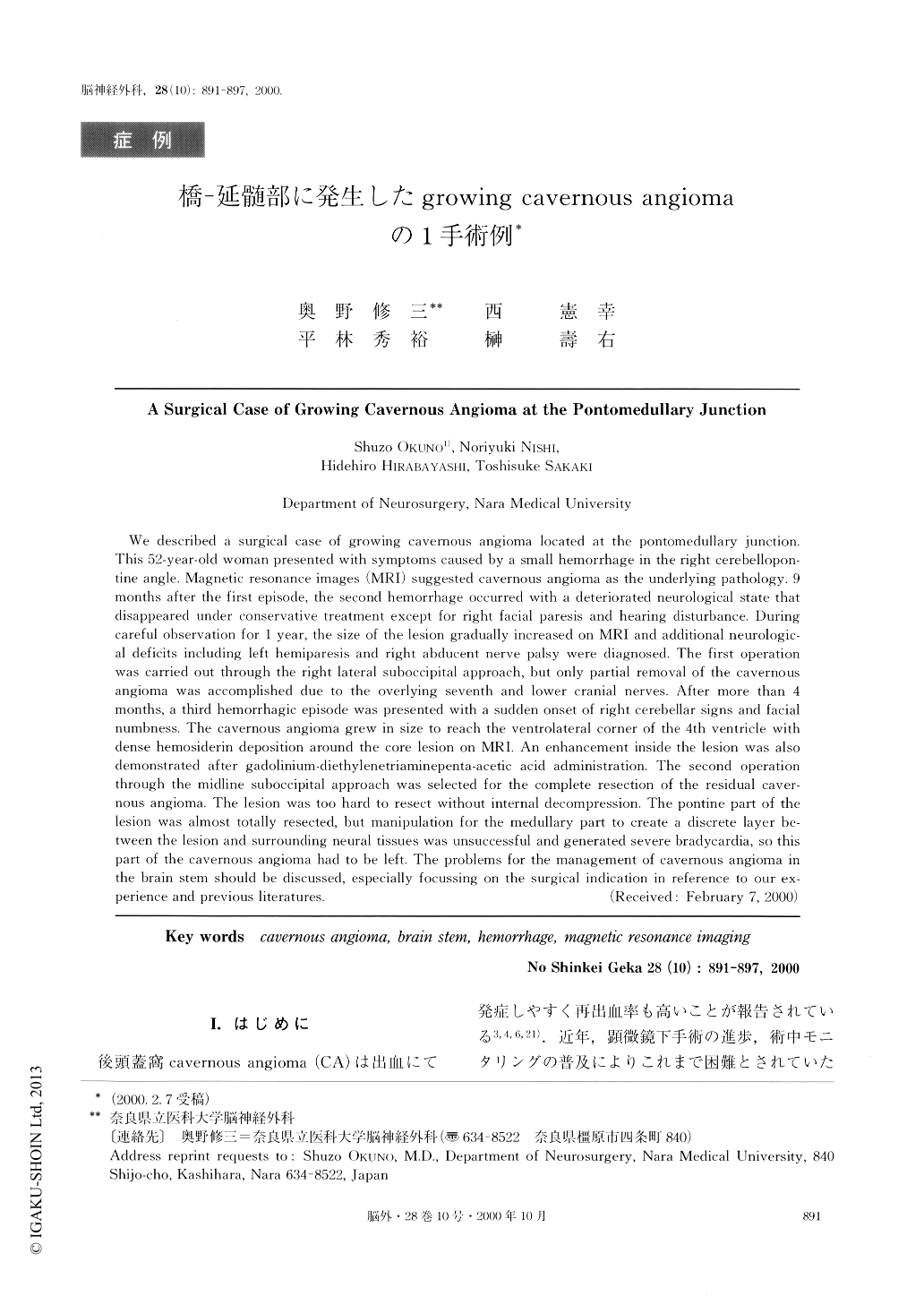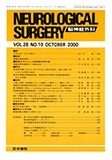Japanese
English
- 有料閲覧
- Abstract 文献概要
- 1ページ目 Look Inside
I.はじめに
後頭蓋窩cavernous angioma(CA)は出血にて発症しやすく再出血率も高いことが報告されている3,4,6,21).近年,顕微鏡下手術の進歩,術中モニタリングの普及によりこれまで困難とされていた脳幹実質内病変に対する直達術の報告が増えているものの2,5,9,14,17,20),なお橋-延髄へのアプローチには重要な神経脱落症状を来す可能性があるため手術適応を決定することは重要であると同時に困難でもある.今回,3度の出血を繰り返しながら神経症状の進行とともに増大する橋-延髄部海綿状血管腫に対して直達術を経験したが,その臨床経過や術中所見から,今後の脳幹部海綿状血管腫に対する手術適応決定の一助になると思われたので文献的考察を加え報告する.
We described a surgical case of growing cavernous angioma located at the pontomedullary junction. This 52-year-old woman presented with symptoms caused by a small hemorrhage in the right cerebellopon-tine angle. Magnetic resonance images (MRI) suggested cavernous angioma as the underlying pathology. 9 months after the first episode, the second hemorrhage occurred with a deteriorated neurological state that disappeared under conservative treatment except for right facial paresis and hearing disturbance. During careful observation for 1 year, the size of the lesion gradually increased on MRI and additional neurologic-al deficits including left hemiparesis and right abducent nerve palsy were diagnosed. The first operation was carried out through the right lateral suboccipital approach, but only partial removal of the cavernous angioma was accomplished due to the overlying seventh and lower cranial nerves. After more than 4 months, a third hemorrhagic episode was presented with a sudden onset of right cerebellar signs and facial numbness. The cavernous angioma grew in size to reach the ventrolateral corner of the 4th ventricle with dense hemosiderin deposition around the core lesion on MRI. An enhancement inside the lesion was also demonstrated after gadolinium-diethylenetriaminepenta-acetic acid administration. The second operation through the midline suboccipital approach was selected for the complete resection of the residual caver-nous angioma. The lesion was too hard to resect without internal decompression. The pontine part of the lesion was almost totally resected, but manipulation for the medullary part to create a discrete layer be-tween the lesion and surrounding neural tissues was unsuccessful and generated severe bradycardia, so this part of the cavernous angioma had to be left. The problems for the management of cavernous angioma in the brain stem should be discussed, especially focussing on the surgical indication in reference to our ex-perience and previous literatures.

Copyright © 2000, Igaku-Shoin Ltd. All rights reserved.


